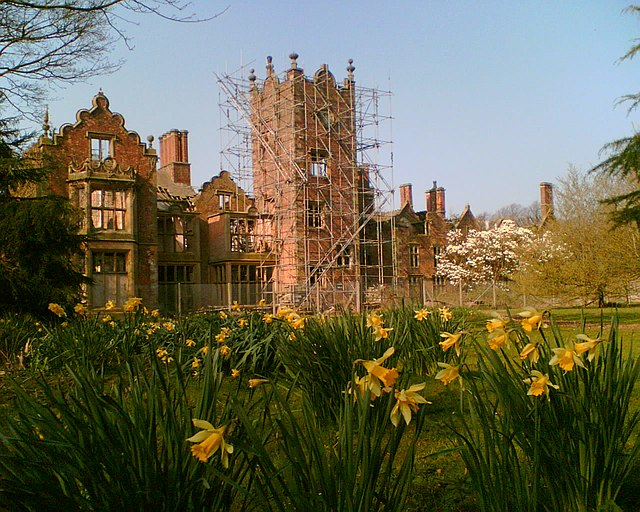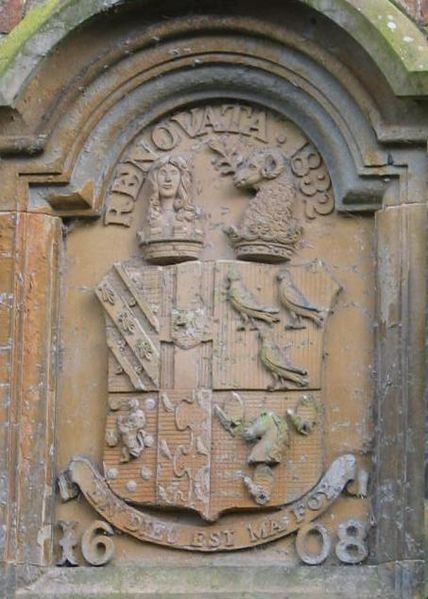Bank Hall is a Jacobean mansion in Bretherton, Lancashire, England. It is a Grade II* listed building and is at the centre of a private estate, surrounded by parkland. The hall was built on the site of an older house in 1608 by the Banastres who were lords of the manor. The hall was extended during the 18th and 19th centuries. Extensions were built for George Anthony Legh Keck in 1832–1833, to the design of the architect George Webster.
The daffodils on the tower lawn at Bank Hall
Legh Keck coat of arms above the front porch at Bank Hall
Diaper flushwork on the 1608 north, front elevation
A view of the clock tower in 2008
The Jacobean style is the second phase of Renaissance architecture in England, following the Elizabethan style. It is named after King James VI and I, with whose reign it is associated. At the start of James' reign, there was little stylistic break in architecture, as Elizabethan trends continued their development. However, his death in 1625 came as a decisive change towards more classical architecture, with Italian influence, was in progress, led by Inigo Jones. The style this began is sometimes called Stuart architecture, or English Baroque.
Castle Bromwich Hall, Birmingham
Jacobean Revival dining hall (Selwyn College, Cambridge)
The Jacobean east wing of Crewe Hall, Cheshire, built in 1615–36
Bank Hall, Bretherton, built in 1608







